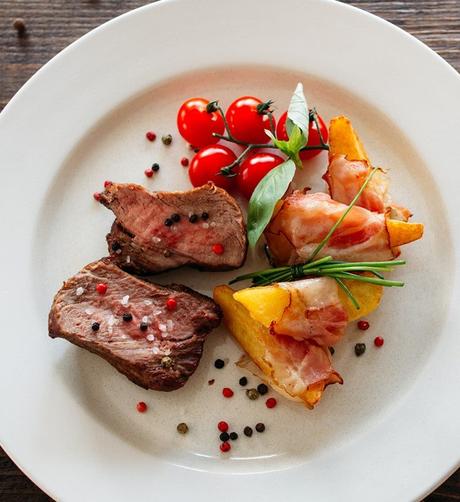
As a cook, you find yourself constantly looking for ways to reinvent food. So, it's only natural to sometimes find yourself stumbling in the dark, especially when it comes to cooking your meats.
Medium-rare pork is no exception to the case. This level of doneness of pork, which results in the most beautiful pink flesh, has been a hot topic for quite some time now.
While there are varying opinions on whether or not you can eat medium rare pork, the United States Department of Agriculture (USDA) has declared that it's safe to consume, provided it's cooked to a specific internal temperature. But, if you continue to be uncertain about the safest way to cook meat, here's a handy guide on whether eating pork medium rare is safe.
Isn't Pink Meat Basically Uncooked and Thus Unsafe?
For years, we've thought that pink meat was a sign of trouble. And that's true, to an extent.
Cooking meat at medium rare temperatures can give the bacteria on its surface a chance to live and enter your system.
This can make you susceptible to Trichinosis - a disease resulting from the trichinella parasite - that can cause anything from high fever and muscle ache to serious complications that affect the heart and brain. It could also make you more susceptible to yersiniosis or other similar infections.
While the health risks are serious, that doesn't mean you have to eat dry, chewy, overcooked pork.
Thanks to the advances we've made in science, we now know what made medium-rare pork harmful to our health - feeding pigs "slops," which is a type of wet feed made with mostly kitchen waste.
Understanding this has led to better pig-rearing practices such as controlling the food given to pigs that are commercially reared and monitoring where they're kept and how they're treated. This has been quite effective as the CDC noted that there were 10 occurrences of trichinellosis linked to commercial pork products between 2008 and 2012, of which only 5 resulted from undercooked pork.
Is Medium Rare Pork Safe to Eat?
According to the current USDA guidelines, medium rare pork is safe to eat.
Originally, 160°F was considered to be the right temperature to get the slight pink meat everyone seems to love, but the guideline has since been lowered to 145°. This is the internal temperature you should see at the meat's thickest part, after which, you should let the cooked meat sit for about 3 minutes before consumption.
To kill the trichinella parasite, you need a temperature of 137°F, so cooking your pork at 160°F should eliminate any health risk associated with it.
So, the next time you score a quality pork steak, make sure you use a food thermometer to check whether the internal temperature of the meat is at least 145°F. Then, let it rest before you get to carving it. It will result in a juicy and tender cut of meat with the most wonderful texture.
So, What's The Verdict? Can You Eat Pork Medium Rare?
This is the part where it gets tricky.
While the USDA has approved a guideline for the internal temperature of pork that makes it suitable for consumption, there hasn't been much talk about the degree of doneness - which is what the term "medium-rare" is about.
However, the slight pink color is achieved when an internal cooking temperature reaches 145°F and the meat is left to rest before consumption. This means that medium-rare and the approved internal temperature are synonymous.
That said, do keep in mind that the 145°F internal temperature guideline does not apply to all cuts of pork. So, there's a possibility that the internal temperature of certain cuts of pork can turn out to be lower than recommended, which can make it unsafe to eat.
For example, an internal temperature of 145°F will be perfect for chops and steaks as it will easily kill any bacteria present on the surface. On the other hand, a 145°F internal temperature will not work on ground pork, sausage, or any meat that has been "blade or mechanically tenderized".
This is because the grinder and small blades can cause the bacteria living on the surface to permeate within the flesh, which can expose you to salmonella and E-coli. You thus need a much higher temperature to destroy these bacteria.
Considering the risks involved, it's best that you avoid eating medium-rare pork altogether. Medium doneness will be a better choice as it will give you juicier meat.
However, if you still want to stick with medium-rare, be sure to follow the recommended methods of cooking and freezing pork and check the internal temperature using a meat thermometer to eliminate the risk of Trichinosis for a safe eating experience.
